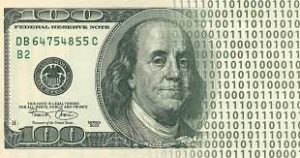The Digital Dollar Approaches

As I predicted in past issues, the US government is moving forward with its intention to put an end to cryptocurrencies and replace them with a digital dollar. And as noted on Feb. 3, it’s been happening a lot faster than I expected.
The first step was taken on Jan. 9 with the announcement that the Fed was “opening a review to determine the feasibility of having a US digital dollar.”
The next step was the March 9 EO from Biden, “Executive Order on Ensuring Responsible Development of Digital Assets,” that includes a subsection – 5(b)(vii) – requiring the Director of the Office of Science and Technology Policy (OSTP) to begin working on an interagency report addressing “the potential for these [blockchain] technologies to impede or advance efforts to tackle climate change at home and abroad,” as well as “the effect of cryptocurrencies’ consensus mechanisms on energy usage.”
This is pretty clever. Instead of charging cryptocurrencies with playing a role in white-collar crime, drug running, and tax evasion (a rationale that will surely come next), the smart folks behind the digital dollar are leading the charge with this environmental concern.
And it’s interesting, because what makes certain cryptocurrencies so energy dependent is an algorithm that limits their production. It’s called proof of work (PoW).
PoW, which is used by Bitcoin, makes miners compete to solve a mathematical puzzle. The work involved in solving the puzzle becomes increasingly more complicated as the total number of the coins in circulation grows. Each calculation, then, becomes increasingly expensive, mostly in terms of electricity.
When Bitcoin debuted, a calculation could have cost the miner mere pennies. Now, each one costs tens of thousands of dollars.
This is a good thing, because it ensures that the value of each newly mined Bitcoin must increase. If it didn’t, there would be no point in spending money to mine them.
The ultimate goal is to make the Bitcoin anti-inflationary, just like the dollar was before President Nixon unshackled it from the value of gold. Since then, the actual value of the dollar has decreased by something like 99%.
If the people behind this were being honest, they would be saying, “We don’t like Bitcoin because if it one day replaces the dollar, we won’t be able to spend money we don’t have.” But they won’t say that, because it would lay bare a simple fact about our monetary policy: that it was purposely designed to let the government bribe voters with various programs it can’t afford.
Here’s the way I see the government’s current plan playing out:
* Introduce the idea of a digital dollar. (That’s already been done.)
* Start a campaign explaining why digital currencies are bad. (The March 9 EO was the first salvo.)
* Ramp up the advertising for the digital dollar as a solution to tax cheating and white-collar crime. (That’s coming next.)
* Roll out the digital dollar with major media support.
* Ban Bitcoin and all similar (i.e., anti-inflationary) digital currencies.
* Then be able to track, tax, and control the citizenry in every possible way.
 MarkFord
MarkFord